English Silver Hallmarks
A comprehensive guide to English silver hallmarks covering the different standard marks, the assay offices, and other special marks like duty marks and commemorative marks.
We will cover silver makers hallmarks in their own right.
As mentioned earlier, silver hallmarks were originally introduced in 1300 by a Statute of Edward I, which became necessary because precious metals are not used in their pure form, but rather have other metals added to them.
Because silver has a high value, it is clear that by adding less silver & adding more copper, that the maker could pass off an item for more money than it was actually worth. By doing this, unscrupulous silversmiths could make significant profits.
Consequently the hallmarking system was necessary.
A typical set of British silver hallmarks includes the Standard Mark, the City Mark, the Date Letter, possibly a duty mark (see below) Duty Mark, and a Maker’s Mark.
The Standard Mark:

This is the standard English lion passant gardant silver standard mark that you will find on almost all English silver. The only other mark that you might find is that of the Britannia Standard, introduced in 1697 & removed in 1720, which denoted a silver content of 95.84% silver. You can see this hallmark below.

This is an image of the Britannia hallmark which has been re-introduced as an optional mark since 1999 to symbolise the finest quality English silver (.958 grade)
The City Mark:
Each city that had an assay office had it’s own unique mark to identify where any piece of silver had been produced, you can see these below:
London Hallmark:
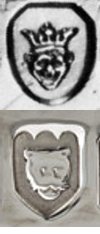
The London silver hallmark was used from 1300 & is represented by a lions head. The crowned head was used prior to 1821, after this date the London hallmark is the lion head without its crown, as in the bottom image.
Birmingham:

The anchor mark was used from 1773 when the assay office opened. In the 20th Century the anchor mark is upright for silver & on it’s side for gold, from 1999 it is on it’s side for both the silver hallmark & the gold hallmark.
Chester:

The Chester assay office produced plate from the 15th Century but was not regulated until the 17th Century. The mark was as shown from 1686 – 1701 when it was replaced with a similar shield, half with wheatsheafs, the other half with 3 lions passant. The 3 wheatsheafs were reintroduced from 1779 until the office shut in 1961.
Dublin:
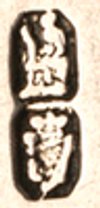
The Dublin silver hallmark has always been the harp (the bottom of the 2 images), with the figure of Hibernia (the uppermost image) being added in 1731. The Dublin assay office opened in 1636 & is still active today.
Edinburgh:
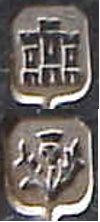
The assay mark for Edinburgh is a 3 towered castle. From 1759 it has been accompanied with the Scottish thistle shown in the second picture to the left, which was replaced with the lion rampant in 1975.
Exeter:

This mark, the three towered castle (see also Edinburgh) was used from 1701 until the closure of the assay office in 1882. An earlier mark of an X in a shield surmounted by a crown had been used previously in Exeter.
Glasgow:
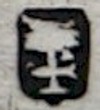
The hallmark for Glagow is based on the Arms of the city, consisting of a Tree, Bird, Bell and Ring. The mark dates from the late 17th Century, the office opening in 1681, and often appears with a lion rampant. The Scottish thistle was added in 1914, the office shut in 1964.
Newcastle:
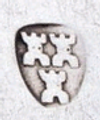
The Newcastle assay office was in operation from 1702 until its closure in 1884
Sheffield:
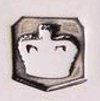
The Sheffield hallmark of a Crown was in use from 1773 until 1974 when it was replaced by a Rose. The office remains open today. Interestingly the Sheffield & Birmingham hallmarks were derived from their partitioning for respective assay offices after they were ommitted by accident from official documents. They used to meet at a pub called the crown & anchor during this time.
York Hallmark:
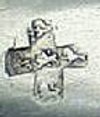
The York hallmark existed originally as a leopards head, then a half rose, until eventually this hallmark was used from 1701 until the assay office closed in 1856.
There was also an office in Norwich but silver from Norwich is very rare, it had stopped making plate by around 1700.
Date Letters:
The date letters are of course very important in determining when any piece of English silver was made, but for these silver hallmarks, which are quite numerous, we recommend that you should buy a silver hallmarks book from our recommended books section. They are quite inexpensive & are always useful to have around.
Duty Marks:

Duty marks were added in 1784 as a tax to pay for the war with America. The tax lasted until 1890! The duty marks above were used during the following dates:
Mark a (the only Kings head facing left) was used in 1784 – 85
Mark b was used between 1786 & 1821
Mark c was used between 1822 & 1833
Mark d was used between 1834 & 1837
Mark e (the only Queens head) was used between 1838 & 1890
The only other hallmarks that you will find on English & British silver are the makers marks, which we will cover in a different section, and commemorative marks such as for the Queens coronation, silver jubilee, etc.
We hope that you find the above look at English silver hallmarks interesting & useful!

